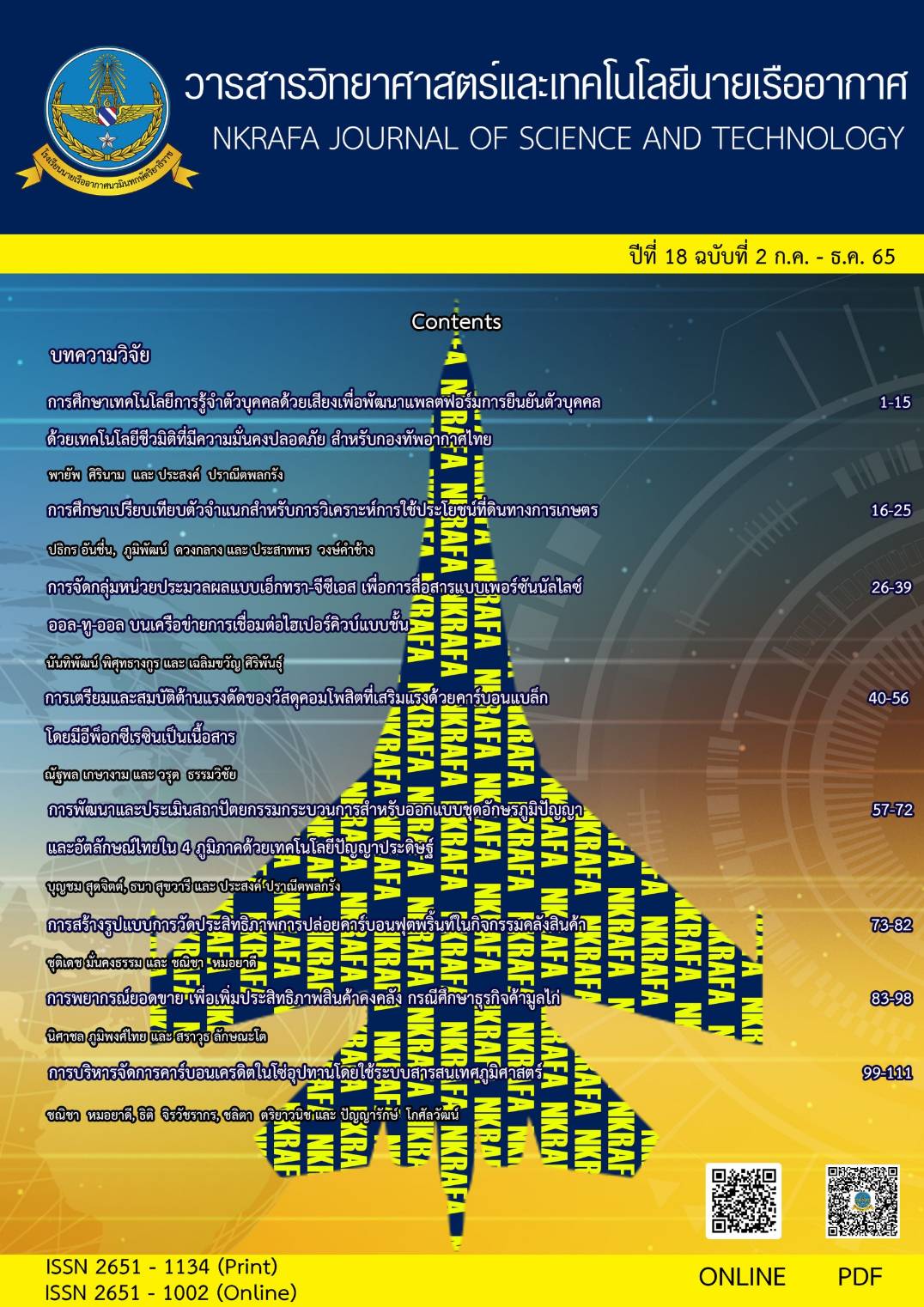A Grouping of Processors with Extra-GCS Combination for Parallel ATAPE on Hierarchical Hypercube Systems
Main Article Content
Abstract
Due to higher scalability and lower cost compared with normal Hypercube system (HCs), Hierarchical Hypercube system (HHCs) is one of the popular models for high performance computing machines. However, edges in HHCs are less than those in HCs and communications between processors in HHCs are more complex, which can cause possible data collisions in parallel computing. Thus, if these issues can be solved, the performance of HHCs will be enhanced and HHCs can be implemented for a multiprocessor system on a chip of embedded systems which supports parallel computing such as All-to-All Personalized Exchange (ATAPE). According to previous research, groupings of cross dual-cube (GCD) and groupings of cross sub-cube (GCS) were proposed to effectively group k 2m+1 processors, where m 2. Nevertheless, in the case of a network with many processors being used or in critical fragments, some processors in the network are not deployed and can be regrouped to do tasks which require k 2m+1 processors. To solve critical fragments of systems with 2m+1 k N/2M processors, where M = 2m-1, this paper proposes an extra-GCS combination. As for the validation, the proposed grouping method was verified using ATAPE communication between k sources and k destinations.
Article Details

This work is licensed under a Creative Commons Attribution-NonCommercial-NoDerivatives 4.0 International License.
- Content and information in articles published in NKRAFA Journal of Science and Technology are comment and responsibility of authors of articles directly. Journal editorial do no need to agree or share any responsibility.
- NKRAFA Journal of Science and Technology Articles holds the copyright of the content, pictures, images etc. which published in it. If any person or agency require to reuse all or some part of articles, the permission must be obtained from the NKRAFA Journal of Science and Technology.
References
ชัญญาวัจน์ สถิตภัทรสมบัติ และ ภูมิพัฒน์ ดวงกลาง. (2564). การประยุกต์ใช้เทคโนโลยีภูมิสารสนเทศและการส่งข้อมูลผ่านเครือข่ายเซลลูลาร์. วารสารวิทยาศาสตร์และเทคโนโลยีนายเรืออากาศ. 17(1): pp.60-70.
M. Abd-El-Barr and T.F. Al-Somani. (2011). Performance comparison of hierarchical interconnection networks. IEEE Pacific Rim Conference on Communications. pp. 191 – 196.
A. Bossard and K. Kaneko. (2011). Set-to-Set Disjoint-path Routing in Perfect Hierarchical Hypercube. The Fourth International C* Conference on Computer Science and Software Engineering. pp. 51-57.
A. Bossard and K. Kaneko. (2013). k – pairwise disjoint paths routing in perfect hierarchical hypercubes. The J. Supercomputing. vol 67: pp. 485-495.
A. Bossard, K. Kaneko, and S. Peng. (2011). Node-to-set disjoint-path routing inperfect hierarchical hypercubes. International Conference on Computational Science. pp.442-451.
C. Lai. (2014). An feffcient construction of one-to-many node-disjoint paths in folded hypercubes. J.Parallel and Distributed Computing, vol.74: pp 2310-2316.
C. Lai. (2017). Optimal Construction of Node-Disjoint Shortest Paths in Folded Hypercubes. J. Parallel and Distributed Computing, vol.102: pp 37-41.
C. Chen, D. P. Agrawal, and J. R. Burk. (1993). dBCube: a new class of hierarchical multiprocessor interconnection networks with area efficient layout. IEEE Trans. Parallel and Distributed System. 4(12): pp. 1332-1344.
Q. M. Malluhi and M. A. Bayoumi. (1994). The hierarchical hypercube: A new interconnection topology for massively parallel systems. IEEE Trans. Parallel and Distributed Systems. 5(1): pp.17-30.
B. Qiao, F. Shi, and W. Ji. (2007). THIN: A New Hierarchical Interconnection Network-on-Chip for SOC. The 7th international conference on Algorithms and architectures for parallel processing , pp.446-457.
N. Phisutthangkoon and J. Werapun. (2021) . Shorest-Path Routing for Optimal All-to-All Personalized-Exchange Embedding on Hierarchical Hypercube. J. Parallel Distrib. Comput. Vol.150C: pp139-154.
N. Phisutthangkoon and J. Werapun. (2021) . Optimal ATAPE-Task Scheduling on Reconfigurable and Partitionable Hierarchical Hypercube Networks. Prallel Computing. Vol.111: pp.102923.
K. Qiu. (2008). An efficient Disjoint Shortest Paths Routing Algorithm for the Hypercube. 14th IEEE International Conference on Parallel and Distributed Systems. pp. 43 – 47.
R.Y. Wu, G.H. Chen, Y.L. Kuo, and G.J. Chang. (2007). Node-disjoint paths in hierarchical hypercube networks. Information Sciences. 117(19): pp.4200-4207.
Y. Saad and M. H. Schultz. (1988). Topological properties of hypercubes. IEEE Trans. Comput. 37(7): pp.867-872.
D. Scott. (1991). Efficient all-to-all communication patterns in hypercube and mesh topologies. Distributed memory computing conference. pp.398-403.
R. Petagon and J. Werapun. (2017). Embeding the optimal all-to-all personalized exchange on multistage interconnection networks+. J. Parallel Distrib. Comput. 16(88): pp 1-15.


